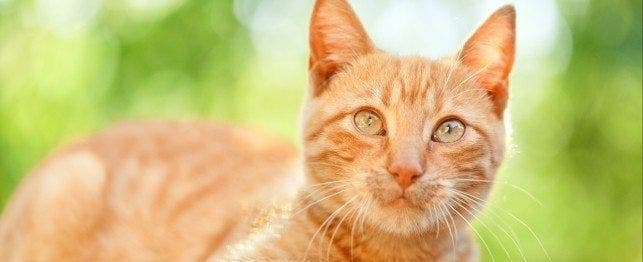
Orange Cats: The Facts and The Legend
Orange cats are real eye-catchers. They range in hue from red to pale yellow and they are prevalent in history and art. Orange tabbies are also described as marmalade or ginger cats. All orange cats are tabbies, but not all tabbies are orange. More on that in a bit.
Orange Cats of Note
Admirers of orange tabbies describe them as mild-tempered, playful, gluttonous, opinionated and affectionate. Every orange tabby I have ever had fits all of those descriptions. They can have short, medium or long hair.
Some famous orange cats in both story and history are Garfield, Morris, Orangey (from Breakfast at Tiffany’s), Milo (and Otis), and Spot (from Star Trek Next Generation). Winston Churchill had an orange cat named Jock who attended cabinet meetings with the Prime Minister. There are many orange tabbies in books and paintings that illustrate the unique attractiveness of these cats
What is a Tabby?
Tabby is a term taken from a striped silk fabric made near Baghdad. Tabby cats all possess the agouti gene, which patterns the fur as tabby.
There are four tabby cat patterns: Mackerel, Classic, Striped and Ticked. Most tabbies have defined “eyeliner” around their eyes and an “M” on their foreheads. A common legend is that a tabby cat jumped into the manger to keep baby Jesus warm and Mary stroked its forehead. Thence forward all tabbies have had Mary’s mark. Various cultures have different legends which shows how much the pattern is revered throughout the world. Eye color in orange cats can vary from yellow to copper to green. In rare instances an almost turquoise with gold flecks has been seen.
So, Where Does the Red-Orange-Yellow Come From?
All cats are either black or red and melanins decide the final color. Eumelanin produces black and brown fur from dark to light shades and pheomelanin makes red to cream shades. Red or orange fur is due to dominant epistasis: one gene changes the expression of another. This actually changes black pigment into orange!
Orange tabbies are 80% male to 20% female because the color depends on what is known as a sex-linked gene. Arnold Plotnik, DVM, has detailed writings annotating the science behind the complicated gene matchups. Basically an orange female must inherit two orange genes. The mother must be either orange, tortie or calico and the father must be orange. The gene that codes for orange must be on the X chromosome in each parent. Since female cats have two X chromosomes, they can carry both eumelanin and pheomelanin, resulting in calico and tortoise patterns. A multicolored female with outstanding stripes is known as a torbie. Should a male cat have a rare calico color, he has an extra X chromosome and is therefore sterile. There may be a white masking gene combined with orange in some cats resulting in orange and white spotted or accented cats. Occasionally black freckles may appear on gums or lips of orange cats. This is known as lentigo and it is usually harmless, but any change in pigmentation should be checked out with your veterinarian in case it is something serious.
What Will You Call Your Orange Cat?
Naming orange cats is always fun. You have the range of pigments or natural elements (copper, red, marmalade, topaz, amber, butter, cream, and rust), or go with names like Penny, Saffron, Sherbet, Goldenrod, Butterscotch, Pineapple, Carmel or Goldie. Get inventive with Phoenix, Goldeneye, Rum Tum Tugger, or stay predictable with Tiger. See our full list of ideas – go to Great Orange Cat Name Ideas. Whatever you call it, your orange cat will not fail to reward you with intelligence, affection and antics.